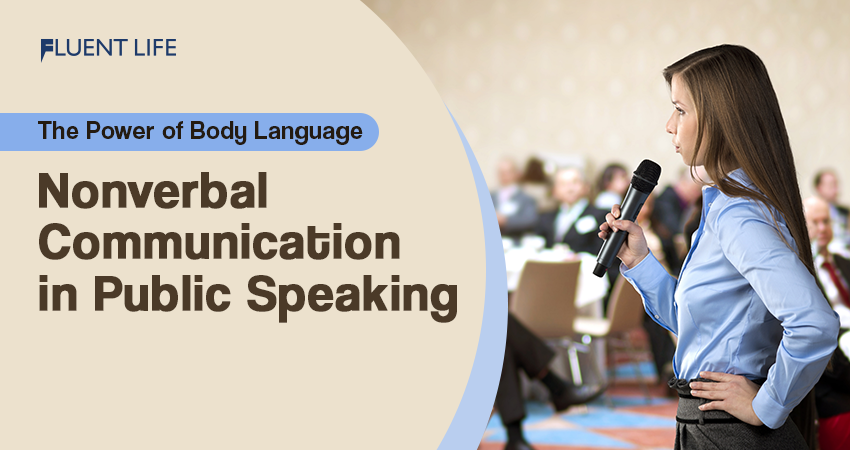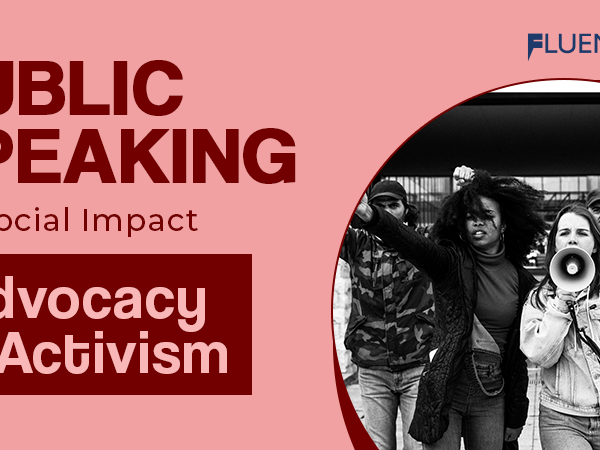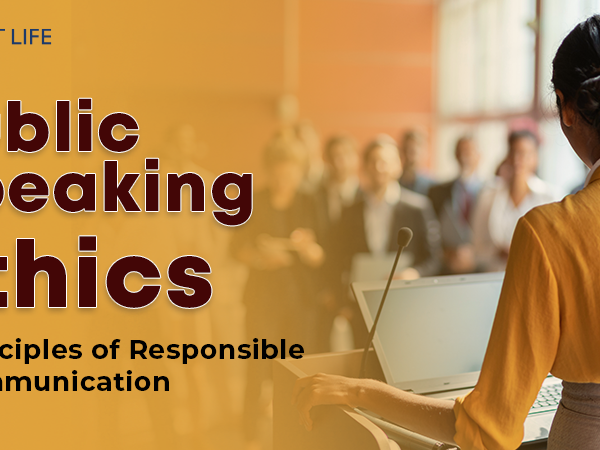Body language is key in public speaking. Posture, gestures, and movements can show confidence and engage an audience. This article explores the power of nonverbal communication and how to use it.
When we take the stage, our body language sets the tone. A strong stance and open posture show confidence. Eye contact, hand gestures, and purposeful movements help build rapport with the audience.
Nonverbal cues can also emphasize key points. A pause and lean forward can underscore an idea. Changing speed and rhythm with facial expressions can add emotion to speech.
It’s not just what we say, but how we say it. Enthusiasm, passion, or conviction can be shown even without words. By combining verbal and nonverbal elements, we can leave a lasting impression.
Pro Tip: Mirror the audience’s body language to build trust and create familiarity. This subtle technique connects us to the listeners on a deeper level.
The importance of body language in public speaking
Public speaking is an art. It goes beyond verbal communication. Body language in public speaking is very important. Facial expressions, hand gestures, and posture are all key. They convey confidence, enthusiasm, and authenticity. This makes the audience more engaged.
Body language can help speakers establish credibility and make a deeper connection. Good posture shows confidence. Avoid fidgeting and crossing arms. Eye contact is essential for building trust. Make eye contact with each individual listener. This keeps the audience focused.
Hand gestures can also be used. Purposeful movements emphasize points. This helps to express emotions that words cannot. Facial expressions offer another way to communicate. Smiling creates warmth. Frowning or looking bored can be off-putting.
To use body language well, practice good posture. Rehearse hand gestures. Use visual aids like props or slides. This reinforces the message. Visual cues keep the audience’s attention.
To master body language, practice and be aware. Understand how nonverbal cues work. Use verbal and nonverbal skills to connect with listeners. Communicate in a compelling way that resonates emotionally and intellectually.
Also Read: Find Your Passion: A Path to Self-Discovery and Fulfillment
Key elements of body language in public speaking
Body language plays a huge part in powerful public speaking. Let’s investigate the fundamental elements of body language that contribute to successful speeches!
- Gestures: Movements can make or break a message. Natural and purposeful gestures keep people engaged and help them understand.
- Facial expressions: The face is an amazing tool for communication. Expressing emotions on the face helps create a bond, and builds trust with the audience.
- Posture and stance: How you hold yourself on stage affects how people see you. Good posture and confidence build authority and trust.
Also, making eye contact with the crowd builds a connection and grabs their attention. Varying your voice adds flavor to your speech, keeping people interested. Lastly, props and visuals can boost nonverbal communication, by strengthening key points.
Pro Tip: Copy the body language of influential speakers to master your own stage presence!
Also Read: Techniques for Innovative Thinking: Boost Creative Thinking
The role of nonverbal cues in conveying confidence and credibility
Nonverbal cues are crucial for public speaking. These cues, like body language, facial expressions and gestures, influence the audience’s opinion of the speaker. Good posture and eye contact show confidence and trust. Hand gestures make the message more engaging. Dressing professionally reflects respect and creates a good impression. Speaking with the right tone and volume adds depth to the message. These unique details set the speaker apart from others.
Strategies for improving body language in public speaking
It’s vital to develop body language when public speaking. Here are some tips to better your nonverbal communication:
- Posture: Stand tall, shoulders relaxed and show an open stance to look confident.
- Gestures: Use hand movements to emphasize points, but don’t go overboard.
- Eye contact: Keep eye contact with your audience to make them feel involved.
- Facial expressions: Show enthusiasm, empathy or seriousness through facial expressions.
Moreover, put focus on small details like nodding or mirroring the energy of your listeners. This creates a connection.
Many famous public speakers have used body language well. For instance, Martin Luther King Jr.‘s commanding gestures during his renowned “I Have a Dream” speech, caught the attention of millions. His use of nonverbal cues enhanced his message.
To conclude, it’s important to understand body language in public speaking. With practice and knowledge, you can engage your audience and deliver an effective speech.
Also Read: Impact of Physical Fitness: Boost Self-Improvement
Case studies and examples of effective body language in public speaking
Studies have shown that open, confident body language such as good posture and eye contact can make one appear more persuasive. A well-known speaker used hand gestures and facial expressions to draw in their audience. Dynamic body movements can help maintain an audience’s attention and emphasize key points.
Subtle details like proper posture and facial expressions can help create credibility, build rapport, show sincerity, and reinforce the message. For instance, Martin Luther King Jr.’s “I Have a Dream” speech in 1963. His confidence, gestures, and passionate tone conveyed a deep commitment to equality and justice.
Overcoming challenges and common mistakes in nonverbal communication
Maintaining eye contact is a common challenge for speakers. They may feel nervous or find it hard to connect with their audience. To master this, practice eye contact and focus on individual members of the crowd.
Poor posture and body language is another mistake. Slouching or fidgeting can reduce credibility and lessen the effect of the message. To fix this, practice proper posture, stand tall, and use gestures to highlight key points.
To combat nervousness, use techniques like deep breathing or visualization. Nervous behaviors such as pacing or avoiding movement completely can stop a speaker from communicating effectively.
Cultures have different interpretations of body language. To prevent misunderstandings, research cultural norms or ask cultural experts.
To improve nonverbal communication:
- Practice in front of a mirror or record yourself for areas needing improvement.
- Seek feedback from trusted people for constructive criticism and tips on body language and delivery.
- Join public speaking clubs or workshops to learn from experienced speakers and get advice on nonverbal communication.
These suggestions work because practice helps individuals become more relaxed and confident. Feedback offers useful information and allows for necessary changes. Interacting with public speaking communities provides chances for growth and gaining from others’ experiences. By working on nonverbal communication skills, people can become better public speakers and make an impact.
Also Read: Top 100 Commonly Used A to Z Phrasal Verbs for English Fluency
Conclusion
Nonverbal communication is a powerful tool in public speaking. It allows speakers to convey messages and connect with their audience deeply. Body language can show confidence and credibility. It can also engage listeners.
We have explored various aspects of nonverbal communication in public speaking. Gestures, facial expressions, and posture can express emotions and enhance the message delivery. By understanding and using these cues, speakers can build rapport and create an impact.
Eye contact is also important. It communicates sincerity and builds trust. It creates a connection between the speaker and listeners, which encourages active participation.
Vocal tone and pace can also be used effectively. By modulating the voice, speakers can emphasize points and keep the audience interested. A well-paced speech helps listeners absorb information and stay engaged. Know More – The Fluent Life
Frequently Asked Questions
1. How does body language affect public speaking?
A. Body language plays a crucial role in public speaking as it can significantly influence how your message is received by the audience. Positive body language, such as maintaining eye contact, using open gestures, and standing tall, can enhance your credibility and make you appear more confident. On the other hand, negative body language, like slouching, crossing your arms, or avoiding eye contact, can create barriers between you and the audience, detracting from your message.
2. What are some effective body language techniques for public speaking?
A. There are several body language techniques you can employ to improve your public speaking skills. These include:
- Maintaining good posture and standing tall
- Using appropriate hand gestures to emphasize key points
- Making eye contact with the audience to establish connection and engagement
- Smiling and displaying genuine enthusiasm for your topic
- Using mirroring techniques to establish rapport with your audience
- Moving purposefully and confidently across the stage
3. How can I use facial expressions effectively in public speaking?
A. Facial expressions are a powerful tool for conveying emotions and engaging the audience. To use facial expressions effectively in public speaking, make sure to:
- Smile genuinely to appear friendly and approachable
- Match your facial expressions with the tone and content of your speech
- Use your eyebrows, eyes, and mouth to express emotions or emphasize certain points
- Avoid excessive or unnatural facial movements that may distract the audience
4. What are some common body language mistakes to avoid during a speech?
A. To deliver a compelling speech, it’s important to be aware of and avoid common body language mistakes. These include:
- Slouching or standing with poor posture
- Fidgeting with your hands or other objects
- Using closed-off gestures like crossed arms or hands in pockets
- Overusing hand gestures, which can become distracting
- Shifting weight excessively or pacing back and forth
5. Can body language help in conveying confidence during public speaking?
A. Definitely! Body language is one of the key factors that contribute to conveying confidence during public speaking. By adopting confident body language techniques such as maintaining steady eye contact, using open gestures, and standing tall, you can project an image of confidence and authority. Additionally, being mindful of your posture, smiling, and speaking with a clear and steady voice also contribute to appearing confident in front of an audience.
6. How can I improve my body language in public speaking?
A. Improving your body language in public speaking can be achieved through practice and awareness. Consider the following steps:
- Record yourself while practicing a speech and analyze your body language
- Take note of any negative body language habits you may have and consciously work on eliminating them
- Observe and learn from skilled public speakers who have excellent body language
- Attend public speaking workshops or classes that focus on nonverbal communication
- Seek feedback from trusted friends, family, or mentors on your body language and continuously strive for improvement.






